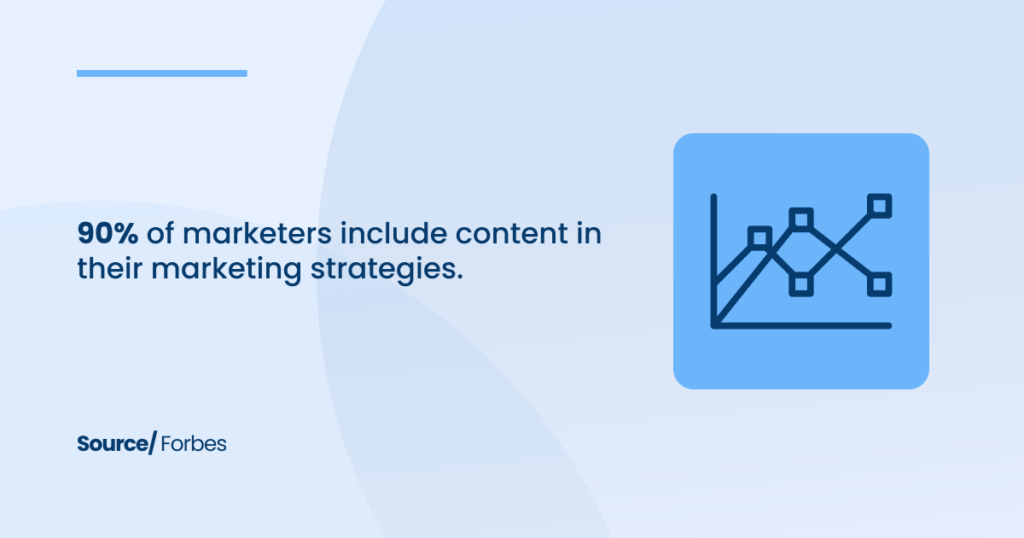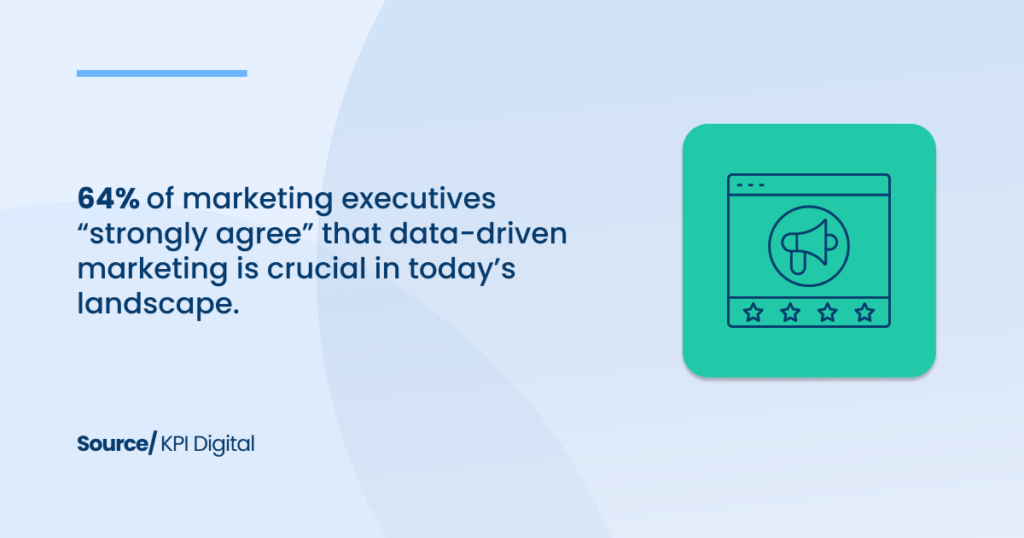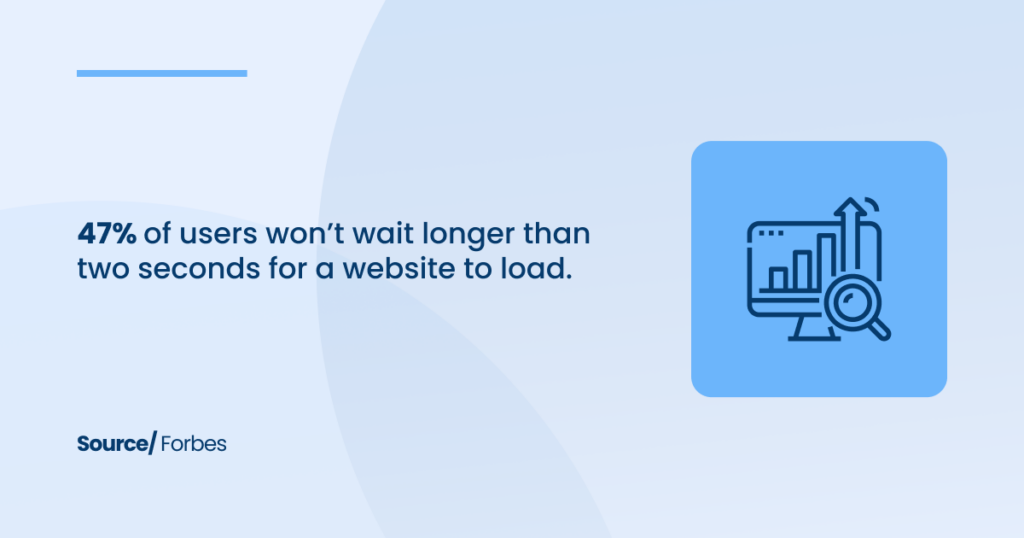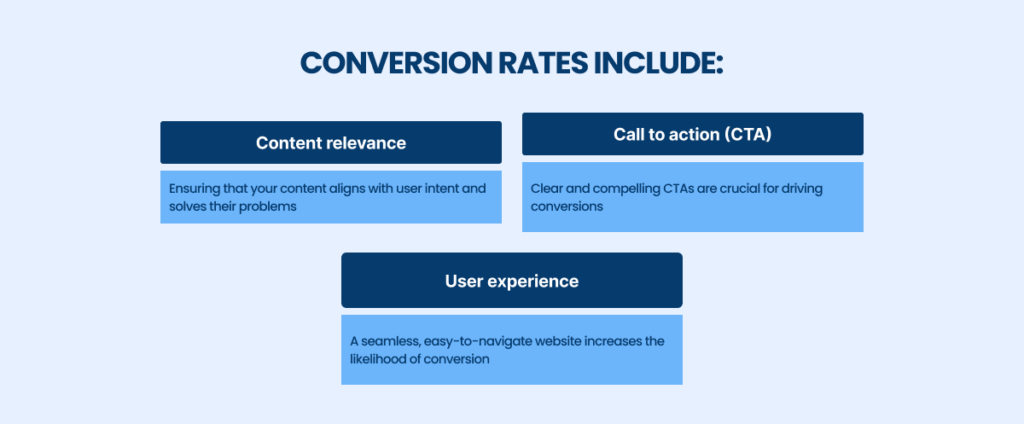Imagine crafting a captivating content masterpiece that resonates with your audience on a profound level.
But what if you could not know if it was truly reaching the right people or making the intended impact?
That’s where content marketing analytics comes into play.
“Content is the atomic particle of all marketing,” notes Rebecca Lieb, a strategic advisor and research analyst.
Emphasizing that content serves as the foundational element, it acts as the essential building block for communicating value.
In 2024, the content marketing industry will grow to be worth an estimated $600 billion.

Accordingly, partnering with a quality Marketing Analytics & Reporting Agency can help drive every marketing effort more effectively.
The blog post will cover what marketing analytics is and how to measure the true impact of your content.
Why Analytics Matter for Content Marketing
In today’s digital landscape, content is at the core of every marketing strategy.
However, simply creating content is not enough. To truly understand the impact of your content marketing efforts, it’s essential to implement robust content marketing analytics.
Measuring the effectiveness of your content goes beyond tracking views and clicks—it involves diving deeper into user engagement, behavior, and how your content influences the overall marketing strategy.
Source: Big data analytics market revenue worldwide in 2019 and 2025, Statista
Moreover, Statista notes the global big data analytics market will grow with a compound annual growth rate of almost 30 percent in the coming year.
Analytics in content marketing provides marketers with data-driven insights that enable better decision-making and more effective content marketing campaigns.
By utilizing digital marketing analytics, businesses can optimize content performance, understand audience preferences, and improve ROI.
Understanding User Engagement and Behavior
One of the primary goals of analytics in content marketing is to understand how users interact with your content.

Engagement metrics such as time on page, bounce rate, and pages per session can provide insights into how well your content resonates with your audience.
Tools like Google Analytics help track these metrics, allowing marketers to assess which pieces of content are driving user interaction and which may need improvement
Key Engagement Metrics to Monitor
- Time on Page: This metric shows how long a visitor spends on a specific page. A higher time on page indicates that the content is engaging and relevant to the audience. If your content is informational or long-form, tracking this metric will help you understand whether readers find it valuable.
- Bounce Rate: The bounce rate measures the percentage of visitors who leave a website after viewing just one page. A high bounce rate might indicate that your content isn’t engaging enough or that it doesn’t meet the user’s expectations.
- Pages Per Session: This metric shows the average number of pages a user views during a session. A higher number of pages per session indicates that your content is compelling enough for users to explore more of your website.
By monitoring these metrics, marketers can better understand the overall effectiveness of their content marketing efforts.
For example, if a blog post has a high bounce rate, it may suggest that the content isn’t delivering on its promise or the user experience needs improvement.
On the other hand, if a post has a high time on the page, it likely resonates with the audience and should be further optimized for conversions.
Analyzing User Behavior with Heatmaps
Marketing analytics tools such as heatmaps can also provide insight into user behavior. Heatmaps show where users click, scroll, and interact on a page, visually representing which parts of the content capture attention.
Marketers can use this data to identify where to place key calls to action (CTAs) and optimize content layouts to maximize engagement.
Key Metrics to Measure Content Performance
Effective content marketing requires more than just producing high-quality content; it involves understanding how your content performs and contributes to your overall business goals.
This is where analytics in content marketing comes into play.
By tracking the right content marketing metrics, you can measure the true impact of your content and make data-driven decisions to optimize your strategy.
Engagement Metrics
Engagement metrics provide insights into how users interact with your content.
These metrics help answer questions like: How much time do users spend on your site? Are they exploring other pages? Are they leaving after viewing just one page? Understanding user engagement is crucial for optimizing content performance and increasing conversions.
Page Views and Time on Page
Page views are one of the most basic yet essential metrics in content marketing analytics. It tells you how many times a specific page on your site has been viewed.

While this metric is useful for measuring traffic, it doesn’t provide much insight into how users engage with the content. This is where time on the page becomes valuable.
Time on page measures the average time visitors spend on a specific page. It helps you understand whether users are reading and engaging with your content or simply skimming through it.
If your content is long-form, such as a blog post or article, high time on page strongly indicates that the content is resonating with readers. Conversely, if the time on the page is low, it may suggest that your content isn’t engaging or that visitors aren’t finding what they expected.
By combining these two metrics, you can better assess how effectively your content captures attention and keeps users engaged.
Bounce Rate and Exit Rate
Bounce rate is the percentage of visitors who leave your site after viewing only one page.
A high bounce rate indicates that users are not engaging with your content beyond the first page, which may be a sign that the content is not meeting their expectations or that there are issues with your website’s design or user experience.
On the other hand, exit rate refers to the percentage of users who leave your site from a specific page, but after visiting more than one page.
While a high bounce rate may be cause for concern, a high exit rate on certain pages may be perfectly normal—especially if those pages are designed to lead visitors offsite, such as a purchase confirmation page.
Both of these metrics are critical for understanding how well your content retains visitors. By analyzing bounce and exit rates, you can identify which pieces of content need improvement to encourage users to explore more pages on your site.
SEO and Traffic Metrics
While engagement metrics are essential for understanding user behavior, SEO and traffic metrics help you gauge how well your content is performing in search engines and attracting visitors organically.
These metrics are critical for ensuring that your content marketing efforts align with your long-term goals and help grow your audience.
Organic Traffic
Organic traffic refers to the number of visitors who find your site through search engines rather than through paid advertising or direct visits.
It is one of the most important metrics in content marketing analytics because it reflects the effectiveness of your SEO strategy.
Source: SemRush
When content is optimized with relevant keywords and high-quality backlinks, it ranks higher in search engine results, driving more organic traffic to your site.
Monitoring this metric helps you understand whether your content is effectively reaching new audiences and attracting users who are actively searching for the topics you cover.
Additionally, tracking organic traffic alongside conversion metrics helps you assess whether the visitors coming from search engines are engaging with your site and taking meaningful actions, such as signing up for newsletters or purchasing products.
Keyword Rankings
Monitoring keyword rankings is another crucial component of SEO and traffic metrics. It shows where your content ranks in search engine results for specific keywords that are important to your business.
Forbes highlights that about 95% of keywords have a volume of 10 or less searches per month.
Source: Forbes
Tools like Google Analytics and marketing analytics software such as SEMrush or Ahrefs can help you track how your content performs in relation to your targeted keywords.
When you see an upward trend in keyword rankings, it’s a sign that your SEO efforts are paying off and that your content is becoming more visible to your target audience.
However, if your rankings drop, it’s important to analyze why this may be happening—perhaps a competitor has optimized their content more effectively, or Google’s algorithm has shifted.
Tracking keyword rankings allows you to adjust your content strategy to focus on high-value keywords and ensure that your content remains relevant and competitive in search results.
Backlinks and Domain Authority
Backlinks are a vital part of SEO and are an important signal of content quality and authority.
A backlink is created when another website links to your content, and having a high number of quality backlinks can significantly boost your domain authority.
Domain authority is a metric that predicts how well a website will rank in search engine results pages, based on factors like the quality of backlinks, website age, and content relevance.
The more high-quality backlinks your content earns, the higher your domain authority will be, and the better your content will perform in search rankings.
This makes backlinks a key metric in content marketing analytics, especially when it comes to assessing the overall authority and influence of your content within your industry.
To boost your backlink profile, consider creating content that is highly shareable and provides unique insights or solutions. Additionally, you can engage in outreach efforts to encourage other sites to link to your content.
Tools like Ahrefs or Moz’s Open Site Explorer can help you monitor the number and quality of backlinks your content has earned.
Using Analytics to Refine Your Content Strategy
Understanding and tracking these key metrics allows you to refine your content marketing strategy over time.
By regularly reviewing content marketing analytics, you can identify trends, discover what works best for your audience, and make data-driven decisions to improve your content’s performance.
Predictive Analytics in Marketing
One of the emerging trends in B2B marketing analytics is the use of predictive analytics marketing to anticipate future content performance based on historical data.
Predictive analytics can help marketers forecast which types of content will drive the most engagement, generate the most leads, or rank highest in search engine results. By leveraging these insights, you can create content that is more likely to succeed and allocate resources more effectively.
Leveraging Marketing Automation Platforms
Finally, using marketing automation platforms can enhance your ability to track and optimize content performance.
These platforms not only streamline email marketing analytics and other digital campaigns but also integrate with content marketing analytics tools, allowing for more cohesive data analytics and reporting.
Automation helps marketers save time while ensuring that their content marketing efforts are continuously monitored and optimized for success.
Conversion Metrics
Conversion metrics are essential for understanding how well your content is turning visitors into leads and, ultimately, customers.
While engagement metrics like time on page and bounce rate provide insights into user behavior, conversion metrics show how effective your content is in driving meaningful actions.
For content marketers, tracking conversions allows them to directly connect their content marketing efforts to business goals such as lead generation, sales, and long-term customer retention.
Lead Generation and Conversion Rates
One of the most important goals of content marketing is to generate leads that can eventually be converted into customers.

Lead generation metrics measure how effectively your content is capturing potential customer information, such as email addresses or contact details, through forms, gated content, or landing pages.
Tracking Lead Generation Through Content Marketing
Content marketing analytics play a vital role in identifying which pieces of content are driving the most leads.
For example, blog posts that offer downloadable content like eBooks or whitepapers may include forms where users must enter their details to access the material.
Source: Digital lead generation advertising spending in the United States, Statista
By tracking how many users fill out these forms, content marketers can measure the effectiveness of their lead-generation efforts.
Social media platforms can also be a key driver of leads, especially when combined with targeted content and ads.
Content marketers can track how many leads come from social media posts, ads, or campaigns by integrating analytics data from platforms like Facebook, LinkedIn, or Twitter into their overall content marketing analytics strategy.
Conversion Rates: From Visitors to Leads
Conversion rate is the percentage of visitors who take a desired action, such as filling out a form, downloading content, or making a purchase.
This metric is crucial for understanding how well your content is performing at different stages of the sales funnel.
For example, a high number of page views on a landing page means little if the conversion rate is low, as it suggests that visitors aren’t engaging enough to take the next step.
Optimizing conversion rates requires a deep understanding of your audience and their behavior. This is where audience data and predictive analytics marketing come into play.
By analyzing content marketing analytics, marketers can identify which types of content lead to higher conversion rates and adjust their strategy accordingly.
By continuously tracking and optimizing conversion rates, content marketers can ensure that their content not only attracts visitors but also turns them into valuable leads.
Sales Attribution
Sales attribution refers to the process of identifying which content pieces, marketing channels, or touchpoints contributed to a sale. This metric is critical for understanding the role content plays in the overall sales process.
Source: HubSpot
With analytics in content marketing, marketers can track a customer’s journey from the first touchpoint to the final purchase, providing valuable insights into what content influenced the decision to buy.
The Importance of Sales Attribution in Content Marketing Success
For content marketers, attributing sales to specific content helps demonstrate the ROI of their content marketing efforts.
Without proper sales attribution, it can be difficult to connect content performance to actual revenue, making it challenging to justify investments in content marketing.
There are several attribution models that content marketers can use:
- First-touch attribution: Assigns all credit to the first piece of content or marketing channel that introduced the lead to the brand.
- Last-touch attribution: Assigns credit to the final piece of content or channel before the conversion.
- Multi-touch attribution: Distributes credit across all touchpoints that contributed to the sale, offering a more holistic view of the customer journey.
Tools for Sales Attribution
To accurately track sales attribution, marketers rely on marketing analytics software and customer relationship management (CRM) systems.
Tools like Google Analytics, HubSpot, and Salesforce enable marketers to connect content interactions to specific sales outcomes, making it easier to measure the direct impact of content on revenue.
By using predictive data analytics techniques, content marketers can even forecast which types of content are more likely to result in conversions, allowing for more targeted and efficient content production.
With a strong understanding of sales attribution, marketers can prioritize content that delivers tangible business outcomes.
Customer Lifetime Value (CLV)
Customer lifetime value (CLV) is a metric that estimates the total revenue a business can expect from a single customer over the course of their relationship.
For content marketers, this metric is invaluable because it shifts the focus from short-term sales to long-term customer retention and loyalty.
By producing high-quality, valuable content that nurtures relationships, businesses can increase CLV and build a loyal customer base.
Understanding CLV in the Context of Content Marketing
Content plays a crucial role in increasing CLV by continually engaging customers throughout their journey with the brand.
From the initial touchpoint to post-purchase interactions, content that educates, informs, and supports customers can drive repeat purchases and foster loyalty.
For instance, after a sale, a customer might receive follow-up content such as educational blog posts, tutorials, or product updates. This type of content enhances the customer experience and increases the likelihood of additional purchases, thereby raising the customer lifetime value.
Measuring CLV with Content Marketing Analytics
To measure CLV, content marketers can use a combination of content marketing analytics and audience data to track how customers interact with content over time.
For example, tracking which content leads to repeat purchases or customer referrals can provide valuable insights into which types of content are most effective at driving long-term value.
By integrating CLV into their overall content marketing strategy, marketers can focus on creating content that not only drives immediate sales but also builds lasting relationships with customers.
Additionally, predictive analytics marketing can help forecast which types of content will have the greatest impact on CLV, allowing for more strategic content planning.
Partner with [A] Growth Agency for Your Marketing Analytics and Reporting Insights
Marketing analytics and reporting are more than numbers on a screen. They are the compass that guides your marketing strategy toward success.
By harnessing the power of data, you can make informed decisions and ultimately achieve your business goals.
[A] Growth Agency will be your ally, as well. Our experienced marketing professionals specialize in turning analytics data into actionable strategies that drive results.
We go beyond traditional metrics to optimize your content, and refine your overall marketing strategy.
Moreover, we believe in the power of data to inform and drive every strategy, ensuring our actions are as effective as they are innovative.
Don’t settle for less and achieve even more.

